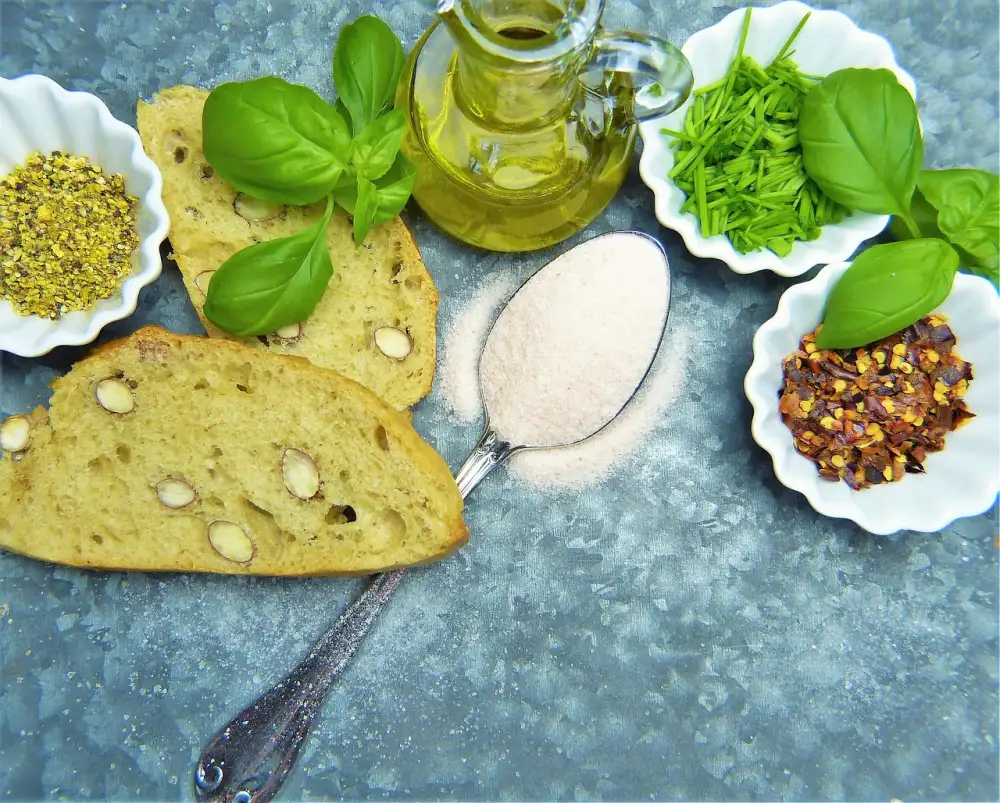Discover the Benefits of Gluten-Free Flour: Elevate Your Health with Flour Alternatives

- Understanding Gluten and its Effects on Health
- Benefits of Gluten-Free Flour for Individuals with Gluten Sensitivity
- Exploring Different Types of Gluten-Free Flour
- Nutritional Value and Health Benefits of Gluten-Free Flour
- Tips for Baking with Gluten-Free Flour
- Incorporating Gluten-Free Flour into a Healthy Diet
Gluten-free flour has become increasingly popular in recent years as more people are recognizing the benefits of eliminating gluten from their diets. Whether you have celiac disease, gluten sensitivity, or simply want to explore healthier alternatives, gluten-free flour can be a game-changer in your kitchen. In this article, we will delve into the world of gluten-free flour, understanding its effects on health, exploring different types available, and discovering its nutritional value and health benefits. Get ready to elevate your food experience with the versatility and health benefits of gluten-free flour!
Understanding Gluten and its Effects on Health
Gluten is a protein found in wheat, barley, and rye. For individuals with celiac disease or gluten sensitivity, consuming gluten can lead to various health issues. When these individuals consume gluten, their immune system reacts by damaging the small intestine lining, leading to nutrient deficiencies and digestive problems.
The effects of gluten on health can vary from person to person. Some common symptoms include bloating, diarrhea, fatigue, and abdominal pain. In more severe cases, it can lead to malnutrition and long-term complications such as osteoporosis and anemia.
It's important for individuals with gluten sensitivity or celiac disease to eliminate gluten from their diet. This is where gluten-free flour comes into play as a suitable alternative for baking and cooking. By using gluten-free flour, individuals can still enjoy their favorite foods without experiencing the negative effects of gluten on their health.
Benefits of Gluten-Free Flour for Individuals with Gluten Sensitivity
Individuals with gluten sensitivity can greatly benefit from using gluten-free flour. Gluten sensitivity is a condition where the body reacts negatively to gluten, a protein found in wheat, barley, and rye. Consuming gluten can lead to various symptoms such as bloating, diarrhea, and fatigue. By using gluten-free flour alternatives, individuals with gluten sensitivity can enjoy their favorite foods without experiencing these uncomfortable symptoms. Gluten-free flour provides a safe and healthy option for those who need to avoid gluten in their diet.
Exploring Different Types of Gluten-Free Flour
There are numerous types of gluten-free flour available, each offering unique flavors and textures. Some popular options include almond flour, coconut flour, rice flour, oat flour, and tapioca flour. Almond flour is made from ground almonds and adds a rich, nutty flavor to baked goods. Coconut flour is derived from dried coconut meat and lends a subtle sweetness to recipes. Rice flour is a versatile option that can be used in both sweet and savory dishes. Oat flour provides a hearty texture and works well in cookies and breads. Tapioca flour is often used as a thickening agent due to its ability to create a smooth consistency. Experimenting with different types of gluten-free flours allows for endless culinary possibilities while catering to individual preferences and dietary needs.
Nutritional Value and Health Benefits of Gluten-Free Flour
Gluten-free flour offers numerous nutritional benefits and health advantages. Firstly, it is often enriched with vitamins and minerals like iron, calcium, and B vitamins to compensate for the nutrients lost during the refining process. Additionally, gluten-free flours are typically higher in fiber, which aids digestion and helps regulate blood sugar levels. These flours also tend to have a lower glycemic index, making them a better choice for individuals with diabetes or those looking to manage their weight. Furthermore, gluten-free flours are often made from nutrient-dense ingredients such as almond meal or quinoa flour, providing an excellent source of protein and healthy fats. Incorporating gluten-free flour into your diet can enhance overall nutrition and promote better health outcomes.
Tips for Baking with Gluten-Free Flour
When baking with gluten-free flour, it's important to keep a few tips in mind. Firstly, gluten-free flours tend to be denser and drier than regular flour, so it's helpful to add additional moisture to your recipes. This can be done by increasing the amount of liquid ingredients or adding ingredients like applesauce or yogurt.
Secondly, gluten-free flours don't have the same binding properties as wheat flour, so using a binder like xanthan gum or guar gum can help improve the texture and structure of your baked goods.
Additionally, it's crucial to mix gluten-free flours well with other ingredients to ensure even distribution. Sifting the flour before using it can help remove any lumps and create a smoother batter.
Lastly, be mindful of baking time and temperature. Gluten-free baked goods may require slightly longer cooking times or lower temperatures to avoid drying out or burning.
By following these tips, you can achieve delicious results when baking with gluten-free flour and enjoy all the benefits it has to offer.
Incorporating Gluten-Free Flour into a Healthy Diet
Integrating gluten-free flour into your daily meals can be a seamless and delicious way to enhance your overall health. Whether you have gluten sensitivity or simply want to explore alternative options, there are numerous ways to incorporate gluten-free flour into your diet.
Start by substituting regular flour with gluten-free alternatives in your favorite recipes. Use almond flour for baking cookies or coconut flour for pancakes. These flours not only provide a unique taste but also offer added nutritional benefits such as higher protein content and lower carbohydrates.
Experiment with different types of gluten-free flours like quinoa, buckwheat, or chickpea flour to diversify your cooking repertoire. These flours can be used in various dishes like bread, pizza crusts, or even as a thickening agent in sauces and soups.
Additionally, consider incorporating gluten-free flour blends into your everyday cooking routine. These pre-mixed blends often contain a combination of different flours, ensuring optimal texture and taste in your dishes.
Remember to adjust the liquid content when using gluten-free flours as they tend to absorb more moisture than traditional wheat-based flours. This will help maintain the desired consistency in your recipes.
By embracing the versatility of gluten-free flour, you can elevate both the flavor and nutritional value of your meals while catering to specific dietary needs. So why not embark on this culinary journey today and discover the endless possibilities that await you?
In conclusion, embracing the versatility and health benefits of gluten-free flour can be a game-changer for individuals with gluten sensitivity or those looking to improve their overall health. By understanding the effects of gluten on our bodies and exploring different types of gluten-free flour, we can enjoy a wide range of delicious and nutritious alternatives. Whether you're baking bread, cakes, or pastries, using gluten-free flour can elevate your food experience while promoting better digestion and overall well-being. So why not give it a try and discover the many benefits that gluten-free flour has to offer?
Published: 11. 12. 2023
Category: Health



